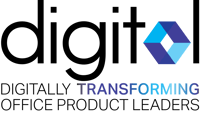Depending on who you talk to may depend on whether email marketing is considered obsolete or (at the other end of the scale) still the single most effective way to reach and engage with a relevant audience.
According to estimates from the Radicati Group, 2017 will see nearly 5 billion email accounts owned by 2.75 billion account holders representing an average of 1.8 accounts per holder. In 2015 it was estimated over 205 billion emails were sent and received per day - a number that's expected to increase to 246 billion by the end of 2019. Most of the increase is down to emails use for notifications (offers, promotions, etc.) rather than for interpersonal communications. The average number of emails received per user per day is estimated at 92 with the number sent significantly lower at 32.
According to Campaign Monitor, for every dollar spent on email marketing campaigns the average return is $38.
If we assume for a moment that 50% of the 200 billion emails sent per day are promotional, then 100 billion emails per day at (for example) an average cost of $0.10 per email would be generating $142 trillion of returns per year - or nearly two times the size of the 2014 global economy! This example should make it clear clear - not every email marketer is generating $38 of returns for every dollar spent!
Not every email is equal so not every email will earn a return of 3,800%. To earn such a high return you must be in the top tier of expertise for running email marketing campaigns. To illustrate this point I have broken down global email marketing (in a very simplistic way) to assess it's performance from four different tiers.
| Tier | Cost | Share | Emails/Day (B) | Invested/Day ($M) | ROI | ROI/Day ($M) | ROI/Year ($M) |
| Spam | $0.001 | 80% | 80 | $80M | 5% | $84M | $30,660M |
| Amateur | $0.010 | 10% | 10 | $100M | 25% | $125M | $45,625M |
| Semi-Pro | $0.050 | 7.5% | 7.5 | $375M | 100% | $750M | $273,750M |
| Professional | $0.100 | 2.5% | 2.5 | $250M | 3,800% | $9,750M | $3,558,750M |
| 100.0 | $805M | $10,709M | $3,908,785M |
I want to stress the data in this table is for illustrative purposes only and it's a gross simplification of reality. It's purpose, however, is legitimate. It demonstrates that only the cream of the crop of professional email marketers can possibly be earning $38 for every $1 spent.
If $4 trillion of annual revenue is earned from around $300 billion of annual email marketing investment and thereby accounts for 5% of the global economy then, based on these numbers, it passes the sniff test, whereas the general statement that the average return for all email marketing is $38 for every $1 spent, does not!
As can be seen in this example, only 2.5% of marketers achieve the 3,800% ROI gold standard. It's not to say that decent returns can't be earned lower down the scale - it's just that they're not going to be 3,800%!
There are many variables needing to be optimized to achieve the gold standard:
- Quality of contacts and their level of engagement
- Segmentation of the contact database
- Quality of campaigns (structure, timing, relevance)
- The value proposition (content offers as well as product offers)
- Planning and execution
Think for a moment about independent office products resellers and think about typical marketing emails you may have seen from this channel. They're usually product offer oriented - i.e. 20% discount on a Brother TN450 cartridge. Well, how many of that particular marketers contacts actually have a Brother machine that uses a TN450 cartridge and, worse still, how many of those that do, actually need a cartridge when the marketing email arrives? This is email marketing at its worst and its ROI is likely to be at the low end of the scale.
Now think for a moment about combining business intelligence with email marketing. Imagine having your Data Collection Agent installed at a couple of hundred local businesses and gathering intelligence on a 1,000 or more printers. Now you're going to know what cartridge is needed and when. Now you're empowered to perfect the timing of a relevant email marketing campaign. Imagine a series of educational emails during the period leading up to the point a cartridge actually needs to be purchased explaining the value proposition of aftermarket cartridges versus OEM brand. During this window, the opportunity is taken to lay the foundation for a conversion from OEM to aftermarket that will increase the chances of a future, well-timed promotional email achieving its desired outcome of a sale.
The prospect of generating $38 of revenue for every $1 spent clearly makes direct email marketing appealing. However, the point of this blog has been to explain that only a small number of marketers achieve these kinds of results. Nevertheless, it's the potential for such attractive returns that should motivate resellers to learn how to conduct effective email marketing. Facebook and Twitter (for example) will not yield these kinds of returns and have their own challenges in terms of audience building and engagement before they can be developed to be worthwhile at all. Email marketing is important and is likely to remain so for years to come.
Our objective from this blog, and for the upcoming series, is to help independent office products resellers understand how to approach email marketing and advance through the ROI tiers I've identified. By doing so, they too, can start to improve returns on the relatively modest investments required for conducting effective email campaigns.
Our next few blogs will focus on:- Contact lists, organizing and segmentation
- The foundation - buyer personas and the buyers journey
- Planning campaigns and strategy
- Execution - automation and workflows
- Goal setting and measuring ROI
The bottom line is that modern business is being digitized and email marketing is an important component of this process. Stick with traditional analog methods and continue to see your business erode as digital competitors chip away at your existing customer base. Start to implement your digital business transformation strategy and start to win new customers and participate in improving the future for office supplies dealerships, not least that of your own!
If you're interested to learn more about a unique Digital Transformation Service - everything you need for a digital upgrade and the tools needed for developing new business with Blue Ocean caliber customers, then click on the link below.

Did you miss my eight-part series on the aftermarket tipping point? Please check out my FREE new eBook, just published and a thorough examination of the aftermarket office supplies industry and a path to the $20 billion growth opportunity.








